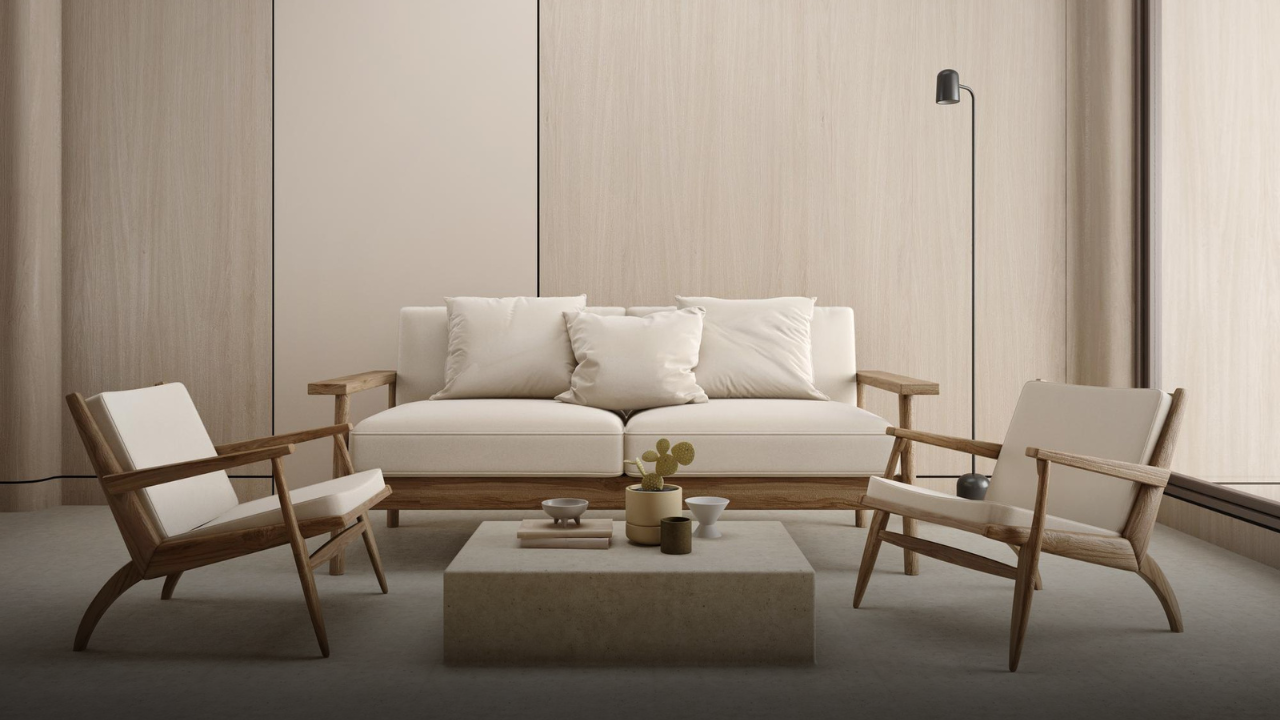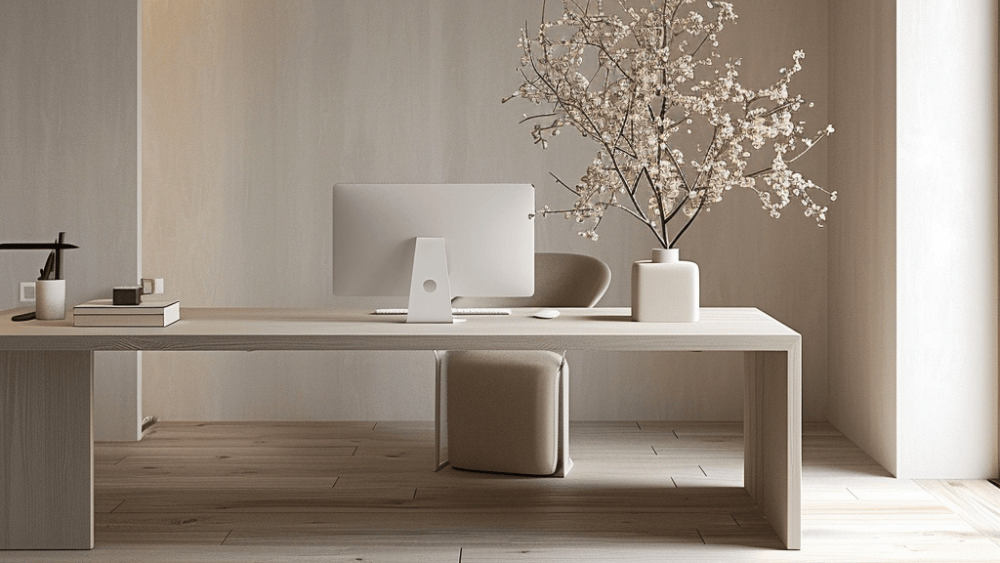Japandi entryways blend Japanese and Scandinavian design for a serene, functional, and visually appealing space. Here's what you need to know :
- Minimalist aesthetic with clean lines and neutral colors
- Natural materials like wood and stone create a calming atmosphere
- Smart storage solutions maintain clutter-free functionality
- Soft, diffused lighting enhances the welcoming ambiance
- Incorporation of plants and wabi-sabi elements add character
Stepping into a Japandi entryway is like entering a world where East meets North, where the serenity of Japanese aesthetics blends seamlessly with the warmth of Scandinavian design. This unique fusion creates a space that's not just visually appealing but also deeply calming and functional. Let's explore how to craft this harmonious blend in your home's first impression zone.
The essence of Japandi style in entryways

Japandi style is more than just a design trend; it's a philosophy that combines the best of two worlds. In the entryway, this translates to a space that's minimalist yet inviting, functional yet beautiful. The key lies in understanding the core principles that define this aesthetic:
Neutral color palette: Japandi entryways embrace soft, muted tones that create a sense of tranquility. Think beige, gray, and white hues that provide a calming backdrop for your space. These colors not only soothe the senses but also allow natural materials and textures to shine.
Natural materials: Wood, bamboo, and stone take center stage in Japandi design. These materials bring a touch of nature indoors, creating a connection with the outside world. A wooden bench or bamboo shoe rack can serve as both a functional piece and a statement of style.
Clean lines and minimalism: The beauty of Japandi lies in its simplicity. Furniture and decor items feature clean, straight lines that contribute to an uncluttered look. This minimalist approach ensures that every element in your entryway serves a purpose, avoiding unnecessary visual noise.
To truly capture the essence of Japandi in your entryway, consider incorporating these elements:
- A low-profile wooden bench with hidden storage
- A simple, elegant coat rack or wall hooks
- A large, frameless mirror to create the illusion of space
- A textured linen wallpaper or accent wall
- Soft, diffused lighting from paper lanterns or minimalist fixtures
Blending functionality with aesthetics

The true beauty of a Japandi entryway lies in its ability to marry form and function seamlessly. This space serves as a transition between the outside world and your home, requiring practical solutions that don't compromise on style. Here's how to achieve this delicate balance:
Smart storage solutions: Clutter is the enemy of serenity. Incorporate clever storage options that keep your entryway organized without sacrificing aesthetics. A sleek shoe cabinet or a built-in closet with sliding doors can hide away outdoor gear while maintaining the clean lines characteristic of Japandi style.
Multifunctional furniture: Choose pieces that serve multiple purposes. A bench with hidden storage compartments provides seating and a place to stow away items. Wall-mounted shelves can display decorative objects while offering a spot for keys and mail.
Mindful arrangement: The placement of each element in your Japandi entryway should be intentional. Create a flow that allows for easy movement while maintaining an open, airy feel. Consider the principle of ma - the Japanese concept of negative space - to avoid overcrowding.
| Functional Element | Aesthetic Consideration | Japandi Solution |
|---|---|---|
| Shoe Storage | Clutter-free appearance | Bamboo shoe rack with sliding doors |
| Coat Hanging | Minimalist design | Wall-mounted wooden pegs |
| Key Storage | Organized look | Small ceramic dish on floating shelf |
| Seating | Clean lines | Low wooden bench with linen cushion |
Incorporating natural elements and wabi-sabi
A Japandi entryway is incomplete without the touch of nature and the embrace of imperfection. This is where the concept of wabi-sabi comes into play, celebrating the beauty of authenticity and the passage of time. Here's how to infuse these elements into your space:
Bringing the outdoors in: Introduce indoor plants to your entryway to create a connection with nature. A tall potted plant or a small collection of succulents can add life and freshness to the space. Choose planters made of natural materials like terracotta or woven baskets to complement the Japandi aesthetic.
Embracing wabi-sabi: This Japanese philosophy finds beauty in imperfection. In your entryway, this could mean displaying a handcrafted ceramic vase with subtle irregularities or choosing a wooden bench with visible knots and grain. These elements add character and depth to your space.
Textural elements: Incorporate various textures to add interest without clutter. A handwoven basket for storage, a rough stone vase, or a linen wall hanging can create a tactile experience that engages the senses without overwhelming the space.
Consider these ways to bring natural elements and wabi-sabi into your Japandi entryway:
- Use a reclaimed wood mirror frame to add rustic charm
- Display a collection of smooth river stones in a simple bowl
- Hang a minimalist ink painting featuring natural motifs
- Place a small water feature to create a sense of tranquility
- Use natural fiber japandi rugs or tatami mats for flooring
Lighting and ambiance in Japandi entryways

The right lighting can transform your Japandi entryway from a mere passageway into a welcoming sanctuary. The key is to create a soft, diffused glow that enhances the serene atmosphere. Here's how to illuminate your space effectively:
Natural light: Maximize the use of natural light whenever possible. If your entryway has windows, keep them unobstructed to allow sunlight to filter in. This not only brightens the space but also creates a connection with the outdoors, a crucial aspect of Japandi design.
Soft, ambient lighting: Incorporate paper lanterns or minimalist pendant lights to create a warm, inviting glow. These fixtures not only provide functional lighting but also serve as decorative elements that complement the Japandi aesthetic. Consider using LED bulbs with warm color temperatures to mimic the soft light of traditional Japanese paper lamps.
Low-level lighting: Add depth and coziness to your entryway with strategically placed low-level lighting. Wall sconces or small japandi table lamps can create pools of light that guide the eye and add visual interest. This layered approach to lighting allows you to adjust the ambiance according to the time of day or mood.
To create the perfect lighting scheme for your Japandi entryway, consider these options:
- Install a dimmer switch to control light intensity
- Use a combination of ceiling and wall-mounted fixtures for balanced illumination
- Incorporate a floor lamp with a linen shade for a soft, diffused glow
- Place battery-operated candles in ceramic holders for a touch of warmth
- Use LED strip lighting under shelves or along the baseboard for subtle accent lighting
By carefully considering each element of your Japandi entryway, from the color palette to the lighting, you can create a space that truly embodies the harmony of Japanese and Scandinavian design. This fusion not only results in a visually stunning first impression but also sets the tone for a home that values simplicity, functionality, and a deep connection with nature. As you step into your Japandi entryway, you'll feel the stress of the outside world melt away, replaced by a sense of calm and welcoming warmth that embraces both you and your guests.



Leave a comment
This site is protected by hCaptcha and the hCaptcha Privacy Policy and Terms of Service apply.